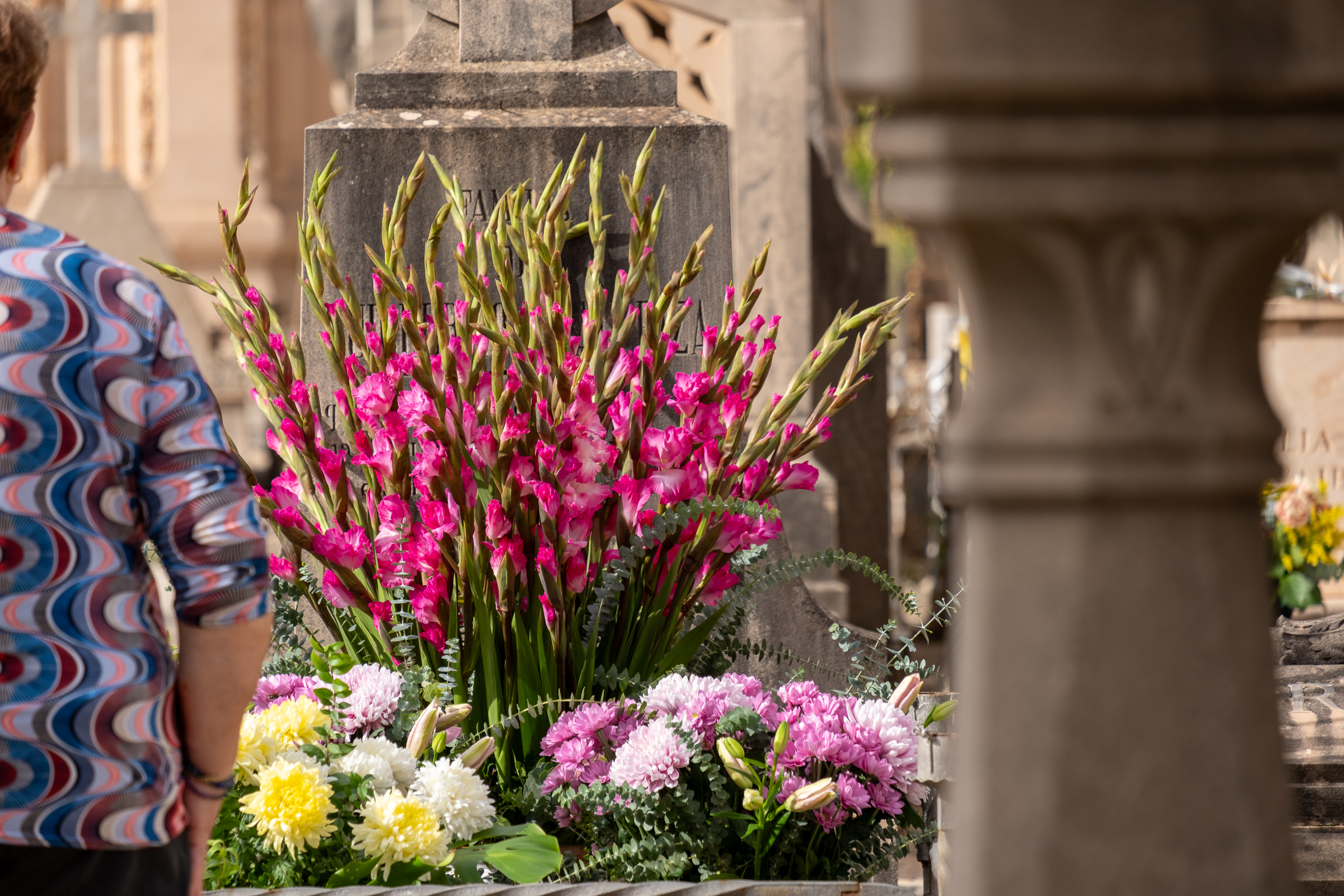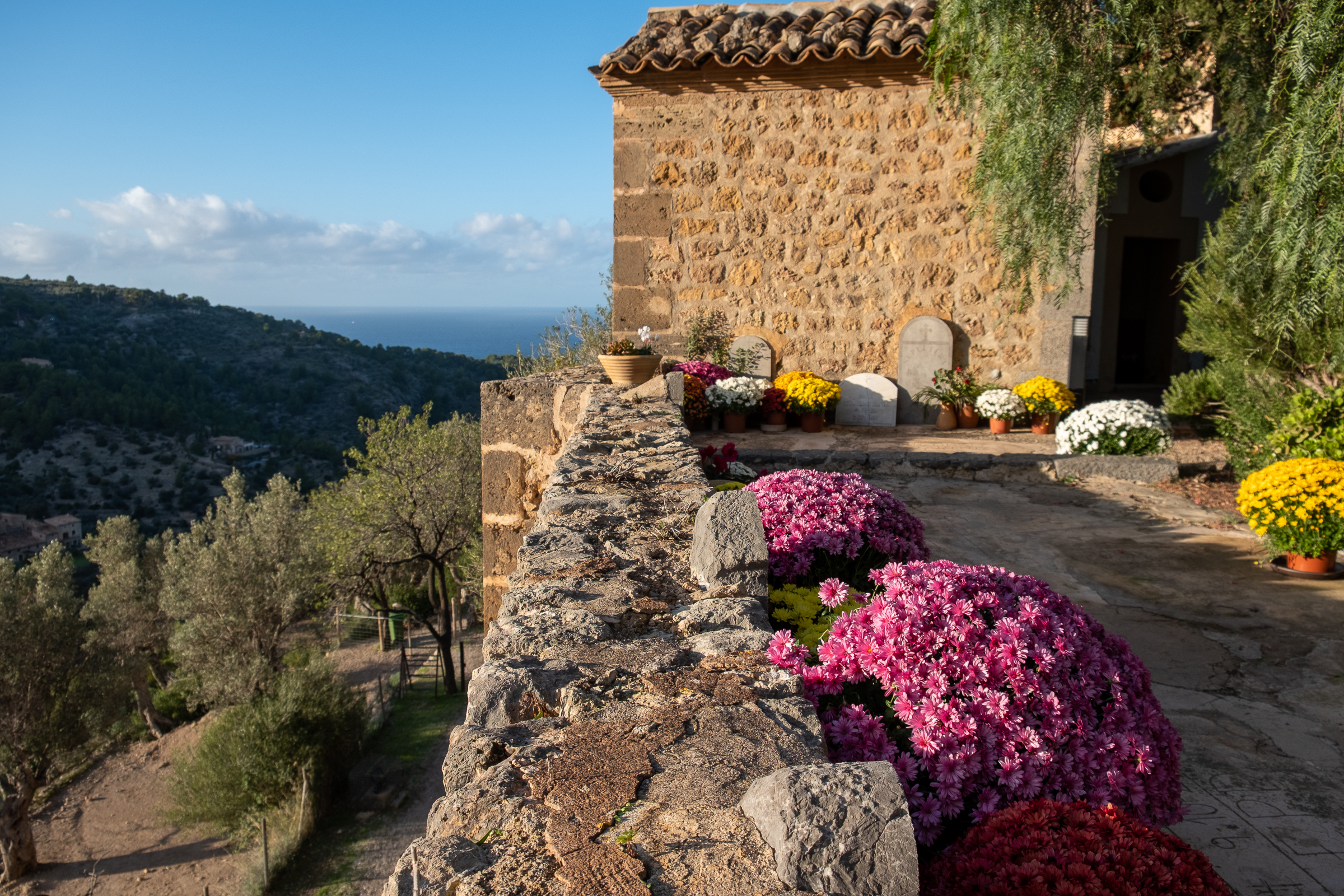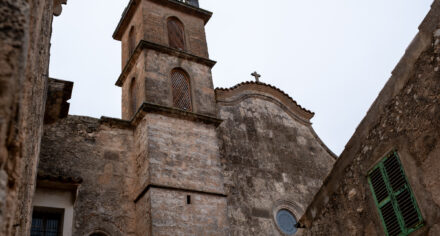Pedro Almodóvar’s Volver opens with an unforgettable scene. Women clean and decorate family graves in the gusty wind of rural Spain. It feels both ordinary and otherworldly, a perfect metaphor for the bond with the departed. On Mallorca, this ritual is very much alive. As Todos los Santos approaches, families across the island tidy graves, polish marble headstones, and bring flowers to the resting places of their loved ones. On All Saints’ Day, cemeteries bloom in color and quiet reverence, sacred spaces where memory and presence intertwine. It is the time of year when the invisible threads between the living and the dead feel closest.

Moving Through Time
Walking through Mallorca’s cemeteries feels like moving through time. There are grand mausoleums of wealthy families, elegantly carved tombs, and long walls of niches stacked like apartment blocks for the dead. The stone angels seem caught between grief and hope. Small portraits on tombstones offer a glimpse into lives once lived, their names still echoing through the streets.

Mallorca’s burial traditions trace back millennia. Under Muslim rule, cemeteries were built outside settlements, following Islamic custom. Graves faced Mecca and were marked modestly, reflecting equality in death.
After the Christian reconquest in 1229, new burial traditions took root. Cemeteries were now established next to churches and monasteries, linking the dead directly to the sacred. The Catholic belief in resurrection shaped not only the rituals but also the very architecture of remembrance.

Faith, Power and Memory
By the nineteenth century, Mallorca’s burial culture had transformed again. Hygiene laws and population growth pushed cemeteries to the outskirts of towns. The Cementiri de Palma became a showcase of status and style, from neogothic chapels to modernist mausoleums designed by local master builder Gaspar Bennàzar. Fittingly, Bennàzar himself rests in one of the cemetery’s most magnificent tombs, a lasting testament to his own architectural vision.

Religion, especially Catholicism, remained a powerful presence. The Church guided the rituals of death and influenced who was buried where. Family tombs became symbols of heritage and hierarchy. During the Franco era, politics entered the cemetery as well. Soldiers, clergy and influential families claimed privileged ground. The burial landscape became a mirror of society itself, reflecting faith, class and history all at once.

The Architecture of the Afterlife
Cemeteries across Mallorca are open-air museums of devotion and design. Angels in marble and wrought iron gates tell stories of faith and craftsmanship. Many tombs are signed by local sculptors, others adorned with hand-painted tiles or glass mosaics that shimmer in the Mediterranean light.
These resting places are not only memorials to the dead but also monuments to the island’s artistic spirit, reminders that even in mourning, beauty endures.

Memento Mori: The Poetry of Mortality
Descend into the catacombs and the light dims. Candles flicker beside forgotten tombs, flowers defying the dust and darkness. This is not merely a place of death, it is a memento mori, a whisper to the living that every life leaves a trace and every moment matters.
To remember the dead is to affirm the value of the present, the fragile and luminous gift of being alive.

All Saints’ Day on the Island
On All Saints’ Day, Mallorca’s cemeteries come alive. Under soft autumn skies, families gather to clean, decorate and pray. Chrysanthemums and candles turn the rows of tombs into fields of color and light. The air smells of wax, pine and sea breeze.
Sometimes belief and superstition still blend. Some whisper that the spirits visit that night; others simply feel their presence in the flickering candlelight. What unites them all is reverence, a sense that the boundary between the living and the dead grows thin, if only for a day. The ritual of remembrance keeps the island’s stories alive, generation after generation.

Volver: Love, Memory and Continuity
Like in Volver, where the dead seem to walk among the living, All Saints’ Day on Mallorca blurs the line between worlds. Cemeteries become places of connection, not separation, places where memory breathes and love persists.
Perhaps that is the real lesson of memento mori. Remembering death teaches us to cherish life. On this island, surrounded by the Mediterranean Sea, All Saints’ Day is less about mourning and more about continuity, the gentle and timeless rhythm between what was and what remains. ![]()
Read more about the Cementiri de Palma, here.




